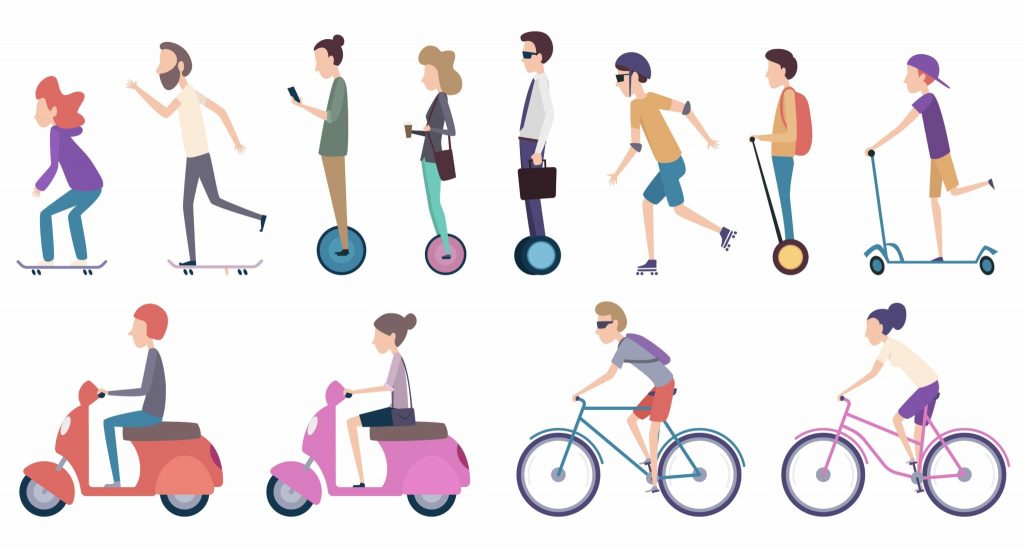Documenting Canada’s Community Response to Transport Poverty: A 5-Year Review
With the recent release of the Canadian Community Initiatives Addressing Transport Poverty Catalogue, accompanying report, and interactive web map, a multi-year effort to document community action in Canada on transportation equity has reached a five-year milestone.
Initially launched in 2021, this collaborative project between the Mobilizing Justice Theme 2 Transportation Modes team and The Centre for Active Transportation (TCAT) at Climate Action Partnership annually compiles community initiatives across Canada that promote transport equity by expanding transportation options, particularly for people experiencing transport poverty.
In this 2025 update, 51 new initiatives were added and 27 archived into the catalogue, which is a living Google spreadsheet that multiple researchers have continually refined over time. There are now 359 active community initiatives in the catalogue, categorized according to 20 variables. 55 initiatives have been archived over the years because the initiative was discontinued or completed. For three of the variables (region, transportation mode, and equity-deserving focus), the data for all five years of the catalogue were compiled to explore whether there had been any notable shifts over time.
Some initiatives of interest in this new catalogue update include:
Grassroots initiatives in different parts of the country have sprung up to take action against unsafe road design and vehicle speeds, including:
- Safe Parkside, a lobby group for improved road safety on a local Toronto street with excessive vehicular speeds, multiple collisions resulting in fatalities and serious injuries, and vandalized speed cameras that have been chopped down seven times in 10 months. The group has criticized Ontario’s recent controversial legislation to ban speed cameras
- Safe Speeds Winnipeg, a grassroots initiative to engage citizens about the impact of vehicle speed.
- Vision Zero Vancouver, a volunteer citizen advocacy group that use various campaigns and public awareness strategies to reduce traffic crashes.
Ontario’s legislation to restrict bike lane construction spurred a strong community response, including:
- Cycle Toronto v. Ontario, a successful legal challenge launched by the member-supported charity found that the legislated removal of 19 km of protected bike lanes was a violation of the Canadian Charter of Rights and Freedoms
- East End Vs Bill 212, a group that quickly formed in response to Bill 212, organizing several large protest rallies and group rides.
- Balance on Bloor, a group of residents and business owners who came together to oppose the westward extension of the Bloor bike lanes, influencing the passing of Bill 212.

East End Vs Bill 212 organized large protest rallies and group rides in response to anti-bike lane legislation (Photo by Alex Ganassini, used with permission)
We have now completed five years of monitoring and documenting community action in Canada working towards transportation equity. A few closing reflections on what we have learned:
1. The distribution of where community initiatives in the catalogue are located is reflective of where people live. The number of initiatives in each region have all gradually increased over time proportionately to their population. Ontario was somewhat of an outlier in this 2025 update with a sharp 27% increase in community initiatives over the past year, at least partly due to new legislation to restrict bike lanes and ban speed cameras.
2. The travel mode with the highest community response is cycling, and the number of related initiatives has continued to increase over time. The focused activity on cycling has happened against a backdrop of the automobile persisting as Canadian’s predominant commute to work mode. Clearly, despite a bump in the number of driving-focused initiatives, community efforts in this country continue to focus on improving transportation options beyond the automobile.
3. Close to half of the community initiatives focus on equity-deserving populations. The most prevalent area of focus is people experiencing low-income. We saw a gradual increase of initiatives with an equity-deserving focus between 2022 and 2024 (from 111 to 158) and a slight leveling off in 2025 (to 155). Within the transportation equity non-profit sector at least, our tracking to date indicates that commitment to DEI in Canada is staying relatively stable.

Figure 5. Community Initiatives by Mode of Transportation Focus, 2021-2025
Our intention with this catalogue is to provide a foundation for understanding Canadian community initiatives working to address transport poverty and increase transportation options beyond the private automobile. We hope it will continue to be useful for advocates and practitioners alike to better understand the transportation barriers and adaptive practices being implemented across Canada and ultimately inform the development of evidence-based policy recommendations to advance transport equity.
Nancy Smith Lea is the Community Co-Lead of the Mobilizing Justice Transportation Modes Thematic Working Group and a Senior Advisor at The Centre for Active Transportation (TCAT) at Climate Action Partnership.
*Main Photo: Safe Speeds Winnipeg is lobbying the City of Winnipeg to enforce a speed limit of 30 km/hr on local roads (Photo by Malaya Marcelino, used with permission)
You may also like
 Findings from the City of Grand Rapids’ Shared Micromobility Free Fare Pilot Program
Findings from the City of Grand Rapids’ Shared Micromobility Free Fare Pilot Program
The Free Fare Pilot Shared micromobility systems, such as bikeshare and scootershare, are increasingly important to cities’ transportation strategies, as they seek to move… Read More
 The Different Price Tags of Access: Transit, Housing Affordability and Demographics
The Different Price Tags of Access: Transit, Housing Affordability and Demographics
Introduction Building a new transit system? Great for commuters. Even better for housing prices. When cities build transit, nearby land and housing prices often shoot… Read More
 Developing Standards for Equity in Transportation Planning and Policy
Developing Standards for Equity in Transportation Planning and Policy
program at McMaster University. I began my PhD in September 2023 and have been part of the PhD MJ Researchers team since then. In a… Read More
